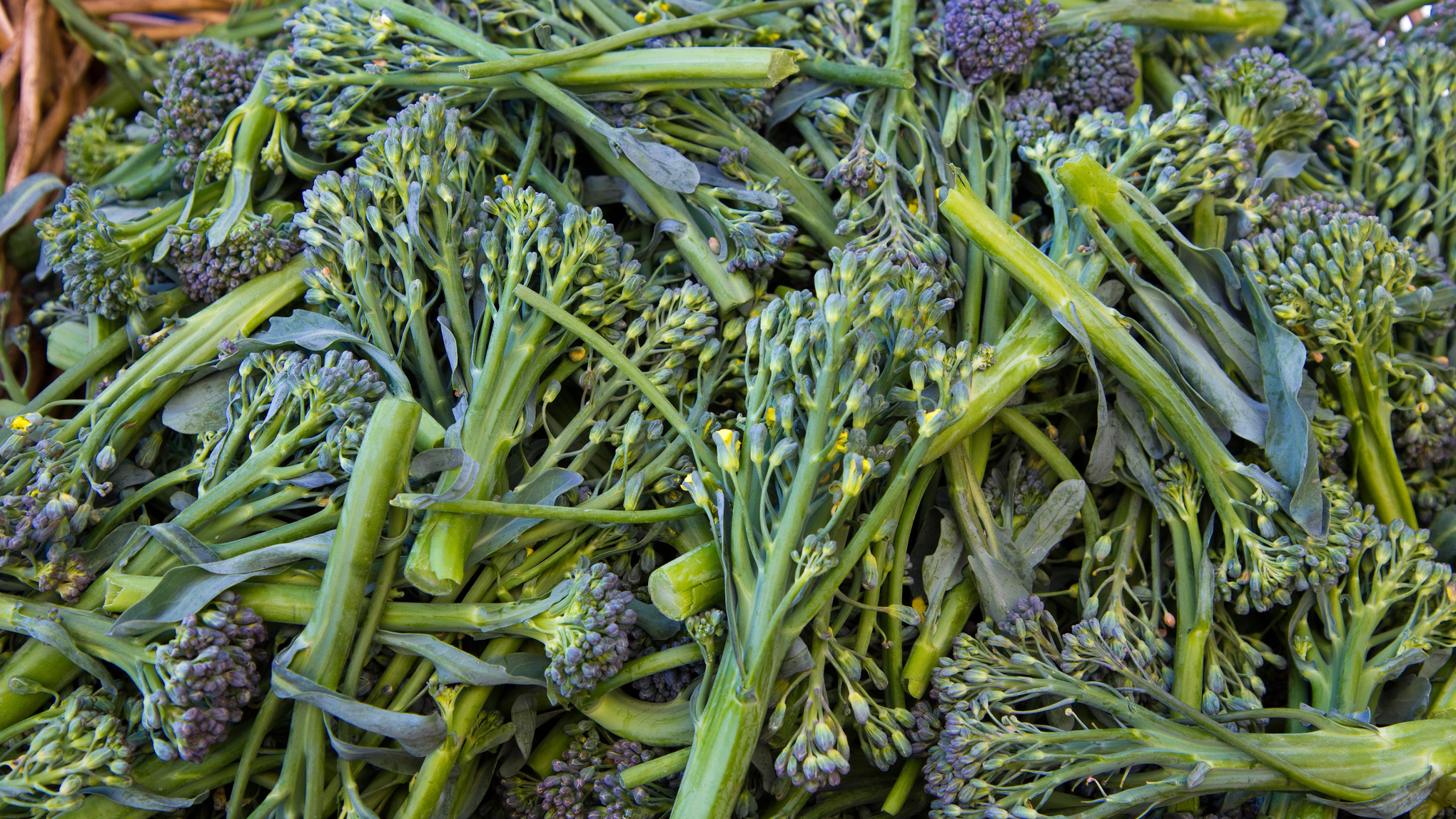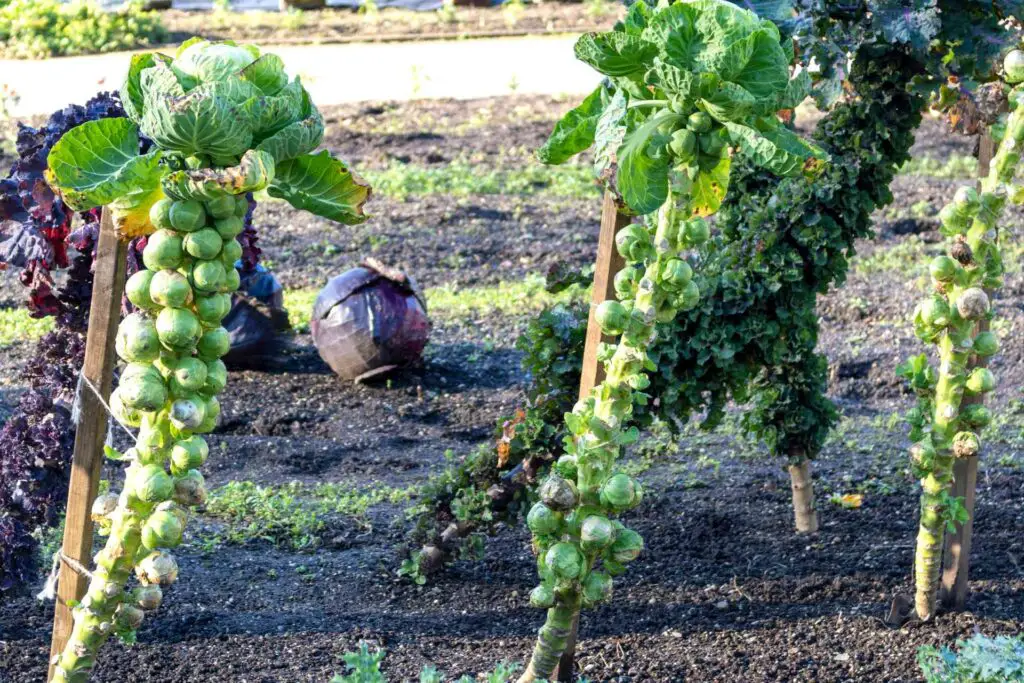Kale, broccoli, and brussels sprouts are all part of the same plant family called brassica oleracea. Kale, broccoli, and brussels sprouts are vegetables that belong to the same species of plant, brassica oleracea.
These three vegetables are popular for their high nutritional value and are commonly found in various dishes and cuisines. Although they have distinct features, such as their color, texture, and flavor, they share many similarities due to their genetic makeup.
In this article, we will explore the relationship between these vegetables and how they are genetically related. We will also discuss their health benefits, culinary uses, and some interesting facts about them. Whether you love them or hate them, these vegetables will always remain an important part of our diet and lifestyle.

Credit: www.vox.com
What Are Kale, Broccoli, And Brussel Sprouts?
Brief Overview Of Each Plant
Kale, broccoli, and brussel sprouts are all members of the brassicaceae family, commonly referred to as cruciferous vegetables. These vegetables are known to have a distinct, mild flavor and boast a variety of health benefits.
- Kale: A leafy vegetable with a thick, fibrous stem and curly green leaves.
- Broccoli: A green, tree-like vegetable comprised of clusters of small florets that emerge from a thick stem.
- Brussel sprouts: Small, leafy round cabbages that grow on thick stalks and resemble miniature cabbages.
Historical And Cultural Contexts Of Each Plant
These vegetables have been cultivated and consumed since ancient times. Kale and broccoli originated in the eastern mediterranean and asia, respectively. Brussels sprouts were first cultivated in ancient rome and then introduced to northern europe in the 13th century. These vegetables have been an essential part of traditional diets and continue to be popular around the world today.
- Kale: Kale was one of the most widely consumed vegetables in ancient greece due to its hardy nature and easy cultivation. It was also popular in medieval times in europe.
- Broccoli: Broccoli has been grown and consumed in italy since the roman empire and was introduced to america by italian immigrants in the early 1900s.
- Brussel sprouts: Brussels sprouts were first cultivated in ancient rome and then introduced to northern europe in the 13th century.
Nutrition Facts
All three vegetables have a high nutrient content and provide numerous health benefits.
- Kale: Kale is an excellent source of vitamin k, vitamin c, vitamin a, and fiber. It also contains potent antioxidants that can reduce inflammation and help prevent chronic diseases.
- Broccoli: Broccoli is rich in vitamin c, vitamin k, fiber, folate, and other essential nutrients. It also contains sulforaphane, a powerful anti-cancer compound.
- Brussel sprouts: Brussels sprouts are high in vitamin c, vitamin k, fiber, and other essential nutrients. They also contain glucosinolates, which have potent anti-cancer properties.
Nutritional Benefits Of Kale
Explanation Of The Nutritional Contents Of Kale
Kale is a leafy green vegetable that belongs to the brassica family, the same family as broccoli, cauliflower and brussels sprouts. It’s incredibly nutritious and is packed with a range of essential vitamins and minerals.
The Health Benefits Of Kale (Antioxidants, Vitamins, Fiber, Etc.)
Eating kale regularly can provide numerous health benefits. Here are some of the most notable health benefits of including kale in your diet:
- Antioxidants: Kale contains a range of antioxidants, including beta-carotene, vitamin c, and flavonoids. These antioxidants help to protect our cells from damage caused by free radicals.
- Vitamins and minerals: Kale is an excellent source of vitamins a, c, and k. it’s also a good source of calcium, potassium, and iron.
- Fiber: Kale is high in fiber, which promotes digestive health and can help to lower cholesterol levels.
- Lower risk of chronic disease: Regular consumption of kale has been linked to a lower risk of chronic diseases such as heart disease, diabetes, and certain cancers.
Culinary Uses Of Kale
Kale’s versatility makes it a popular ingredient in a range of dishes. Here are some culinary uses of kale:
- Salads: Raw kale leaves can be chopped and used as the base for a salad. Kale pairs well with ingredients like sliced almonds, dried cranberries, and goat cheese.
- Smoothies: Kale can be blended into smoothies for a nutritious and filling meal or snack.
- Sauteed or roasted: Kale can be sautéed or roasted as a side dish. Try sautéing kale in olive oil with garlic, salt and pepper or roast it with a little olive oil and parmesan cheese.
- Kale chips: Kale leaves can be baked in the oven to make homemade kale chips. Simply drizzle the leaves with a little olive oil and seasoning and bake until crispy.
Overall, kale is a nutritional powerhouse that can be easily incorporated into any diet. Whether you enjoy it raw in salads or cooked in a variety of dishes, adding kale to your meals can provide numerous health benefits.
Nutritional Benefits Of Broccoli
Explanation Of The Nutritional Contents Of Broccoli
Broccoli is denser in nutrients than other vegetables, making it a star nutrient powerhouse. It has a high concentration of vitamins, minerals, and antioxidants that are beneficial to our health, such as vitamin c, vitamin k, vitamin a, and folate.
The Health Benefits Of Broccoli (Antioxidants, Vitamins, Fiber, Etc.)
Eating broccoli regularly provides various health benefits. Some of them include:
- Boosts immune system: The antioxidants like vitamin c, selenium, and beta-carotene in broccoli helps boost our immune system.
- Improves digestion: High fiber content in broccoli aids in digestion and prevents constipation.
- Reduces cancer risk: Studies have shown that regular intake of broccoli may reduce the risk of various types of cancers such as breast, prostate, lung, and colon cancer.
- Lowers cholesterol: The soluble fiber in broccoli binds with cholesterol in our digestive system and helps reduce overall cholesterol levels.
- Promotes bone health: Adequate intake of vitamin k and calcium, both present in broccoli, help improve bone health.
- Manages blood sugar: Broccoli is a low glycemic index food that aids in balancing blood sugar levels.
Culinary Uses Of Broccoli
Broccoli is not only nutrient-rich but also versatile. Here are some ways to incorporate this powerhouse veggie in your diet:
- Steam it and serve it as it is with a sprinkling of salt and pepper.
- Add it to stir-fries and noodle dishes for a delicious and healthy addition.
- Use it as a pizza or salad topping.
- Blend it into smoothies for an extra nutritious boost.
- Roast with olive oil and garlic for a delicious side dish.
Eating broccoli regularly can provide numerous health benefits due to its rich nutrients including antioxidants, fiber, vitamins, and minerals. Furthermore, broccoli’s culinary versatility makes it easy to include in various dishes.
Nutritional Benefits Of Brussel Sprouts
Explanation Of The Nutritional Contents Of Brussel Sprouts
Brussel sprouts are part of the cabbage family and are a great source of vitamins, fiber, and antioxidants. These cruciferous vegetables are low in calories and high in nutrients such as:
- Vitamin c: Brussel sprouts contain high amounts of vitamin c, an essential nutrient needed by the body to help boost the immune system.
- Fiber: With a significant amount of soluble and insoluble fiber, brussel sprouts aid digestion, lower cholesterol levels, and keep you feeling full for longer periods.
- Antioxidants: Brussel sprouts are packed with antioxidants such as kaempferol, which helps prevent cell damage and reduce inflammation.
The Health Benefits Of Brussel Sprouts
Eating brussel sprouts can benefit your health in so many ways. Here are some of the health benefits:
- Cancer prevention: Brussel sprouts have cancer-fighting properties that can help prevent the growth of cancer cells and reduce the risk of developing cancer.
- Improved digestion: With its high fiber content, brussel sprouts can help keep your digestive system healthy, prevent constipation, and improve bowel movements.
- Stronger bones: Brussel sprouts are a great source of vitamin k, which is essential for maintaining strong bones and preventing bone fragility and fractures.
- Lower cholesterol: The fiber content in brussel sprouts can help lower cholesterol levels and reduce the risk of heart disease.
Culinary Uses Of Brussel Sprouts
Brussel sprouts are a versatile vegetable that can be cooked in various ways. Here are some culinary uses:
- Roasting: Roasted brussel sprouts are a popular side dish. Simply sprinkle them with olive oil and seasonings, then roast in the oven until crispy.
- Sauteing: Sauteed brussel sprouts are another delicious side dish. Cut them into thin slices, then saute them with garlic, butter, and herbs.
- Salad: Shredded brussel sprouts can be used in salads and coleslaws, adding an excellent crunch and texture. Toss with your preferred salad dressing.
In Conclusion
Brussel sprouts are an excellent addition to any diet. With its rich nutritional content and health benefits, there’s no reason not to include them in your meals. Try out some of the culinary uses and discover how delicious and nutritious they can be!
How To Incorporate Kale, Broccoli, And Brussel Sprouts Into Your Diet
Kale, broccoli and brussel sprouts belong to the same plant species, known as brassica oleracea. However, each vegetable contains distinct nutrients and health benefits that make them worth incorporating into your regular diet. In this section, we will discuss the best ways to prepare and cook these vegetables, meal ideas that incorporate these vegetables, and how to grow them yourself.
Best Ways To Prepare And Cook These Vegetables:
- Roasting: Drizzle the vegetables with some olive oil and roast them in the oven until they are tender and slightly crispy. You can add seasonings like salt, pepper, garlic powder, or even parmesan cheese for extra flavor.
- Steaming: This method involves cooking the vegetables in a steamer basket over boiling water. It’s a healthy option because no oil or fat is needed. Additionally, steaming helps retain the vegetables’ natural flavor and nutrients.
- Stir-fry: Heat some oil in a pan and add your favorite vegetables. Stir-frying cooks the veggies quickly and results in a crispy texture. Add some spices or sauces to enhance the flavor.
- Grilling: This method gives the vegetables a smoky flavor and a charred texture. Coat the veggies with some oil before grilling. You can also add some herbs or spices to kick up the taste.
Meal Ideas That Incorporate These Vegetables:
- Salad: Make a salad combining chopped kale, broccoli, and brussel sprouts. Add some cherry tomatoes, cucumbers, avocado, and your favorite dressing.
- Smoothie: You can add kale or broccoli to your favorite smoothie to give it an extra boost of nutrients.
- Stir-fry: Cook some chicken or tofu with broccoli, kale, and brussel sprouts in a stir-fry, add some soy sauce or hoisin sauce for extra flavor.
- Pasta: Add some roasted brussel sprouts and broccoli to your favorite pasta dish. Top it with some parmesan cheese and red pepper flakes.
- Side dish: Sauté some kale with garlic and lemon juice as a side dish.
How To Grow These Plants:
- Start indoors: Begin by starting your seeds indoors. Brassica oleracea grows well indoors and can be started in early spring.
- Transplanting: Once the seedlings are big enough, it’s time to transplant them outside. Choose a spot that gets full sun for at least six hours each day.
- Growing conditions: Kale, broccoli, and brussel sprouts require well-draining soil with a ph level of 6.0 to 7.5. Keep the soil moist, but not too wet. Make sure to weed your garden bed regularly.
- Harvesting: You can start harvesting your vegetables after about 60-90 days. Cut the vegetables off the plants using a sharp knife or scissors.
Incorporating kale, broccoli, and brussel sprouts into your diet is a wise decision, given their numerous health benefits. By utilizing the best cooking methods and growing conditions, you can reap the maximum reward from these veggies. So, go ahead and try out some recipes and start growing your own brassica oleracea crop today.
Frequently Asked Questions Of Kale Broccoli Brussel Sprouts Same Plant
Are Kale, Broccoli, And Brussel Sprouts The Same Plant?
No, kale, broccoli, and brussel sprouts are not the same plant, but they are all part of the same species called brassica oleracea. They have different physical characteristics and nutritional values.
Why Are Kale, Broccoli, And Brussel Sprouts Considered Superfoods?
Kale, broccoli, and brussel sprouts are considered superfoods because they are packed with nutrients. They are high in vitamins, minerals, and antioxidants that offer various health benefits, such as reducing inflammation and lowering the risk of chronic diseases.
Can Kale, Broccoli, And Brussel Sprouts Be Eaten Raw?
Yes, kale, broccoli, and brussel sprouts can be eaten raw. However, cooking them can make them easier to digest and increase the availability of certain nutrients. It’s best to eat them both raw and cooked for maximum benefits.
How Can I Incorporate Kale, Broccoli, And Brussel Sprouts Into My Diet?
You can incorporate kale, broccoli, and brussel sprouts into your diet by adding them to salads, soups, stir-fries, or sautéing them as a side dish. You can also make smoothies or juices with kale or add broccoli and brussel sprouts to omelets.
Are Kale, Broccoli, And Brussel Sprouts Suitable For All Types Of Diets?
Yes, kale, broccoli, and brussel sprouts are suitable for many types of diets. They are low in calories, high in fiber, and are a good source of plant-based protein. They are suitable for vegetarian, vegan, gluten-free, and low-carb diets. However, people with thyroid problems are advised to consume cruciferous vegetables in moderation.
Conclusion
After a thorough analysis, we can conclude that kale, broccoli, and brussels sprouts belong to the same plant family known as brassicaceae. While they may have distinct tastes and appearances, their nutritional properties are very similar and provide numerous health benefits.
Eating these cruciferous vegetables can lower the risk of chronic diseases and some types of cancer due to their high fiber, vitamins, and minerals content. The presence of glucosinolates, a compound found in all these vegetables, has been linked to reducing inflammation and improving heart health.
Incorporating these vegetables into your meals can be as simple as roasting, stir-frying, or adding them to your soups and salads. So the next time you’re at the grocery store, don’t hesitate to pick up these wholesome vegetables. They will definitely boost your health and taste fantastic.



